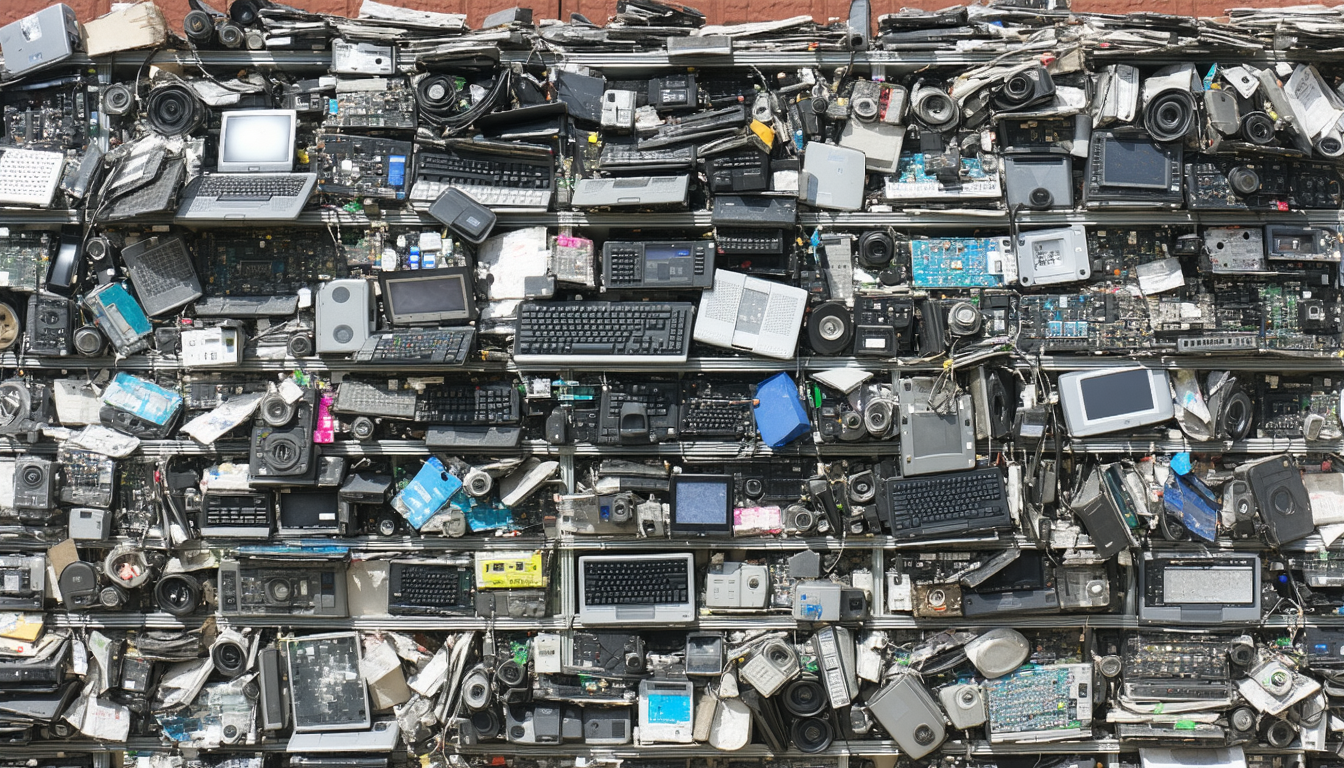In the United States, the mounting challenge of electronic waste, or e-waste, has become a pressing environmental and economic concern. With millions of tons of discarded electronics piling up annually, innovative e-waste recycling initiatives are gaining traction across the nation. This article explores the latest developments in e-waste recycling, from new policies to cutting-edge technologies, and examines their impact on communities, businesses, and the environment. As the U.S. strives for sustainability, these efforts signal a critical step toward managing one of the fastest-growing waste streams in the world.
The Scale of E-Waste in the United States
The U.S. generates approximately 6.9 million metric tons of e-waste each year, according to the Global E-Waste Monitor 2020. This includes discarded smartphones, laptops, televisions, and other electronic devices, many of which contain hazardous materials like lead and mercury. Only about 15-20% of this waste is recycled properly, with the rest often ending up in landfills or being exported to developing countries under questionable conditions.
The Environmental Protection Agency (EPA) has highlighted that improper disposal poses significant risks to public health and ecosystems. Toxic substances can leach into soil and water, creating long-term environmental damage. This growing crisis has spurred action at both federal and state levels to improve e-waste recycling infrastructure.
Recent Policy Shifts in E-Waste Recycling
In 2023, several states have introduced or strengthened e-waste recycling laws to address this issue. For instance, California expanded its Electronic Waste Recycling Act, mandating manufacturers to fund take-back programs for their products. Meanwhile, New York passed legislation requiring free and accessible recycling options for residents by mid-2024.
These policies aim to shift responsibility onto producers, encouraging them to design products with recyclability in mind. According to Dr. Sarah Bennett, an environmental policy expert at Stanford University, “Extended producer responsibility laws are a game-changer. They incentivize companies to rethink product lifecycles while easing the burden on local governments.”
Technological Innovations Driving Change
Beyond policy, technology is playing a pivotal role in transforming e-waste recycling in the U.S. Advanced sorting systems using artificial intelligence are now capable of identifying and separating valuable materials like gold, silver, and rare earth metals from electronic scrap. Companies like Dell Technologies have partnered with recycling firms to recover materials for reuse in new products, supporting a circular economy.
Additionally, startups are pioneering chemical processes to extract lithium from old batteries, addressing shortages of critical minerals. These innovations not only reduce waste but also lessen reliance on mining. As John Carter, CEO of GreenTech Solutions, notes, “Technology is turning e-waste into a resource rather than a liability.”
Impact on Communities and Businesses
Effective e-waste recycling programs are creating tangible benefits for American communities. Job creation is one key outcome, with the recycling sector employing over 45,000 people nationwide, per a 2022 report by the Institute of Scrap Recycling Industries. Local collection events and drop-off centers also empower residents to dispose of electronics responsibly.
For businesses, adopting sustainable practices can enhance brand reputation and reduce costs. Many corporations are now integrating recycled materials into their supply chains. However, small businesses often struggle with compliance due to limited resources, highlighting the need for accessible support systems.
Challenges and Future Outlook
Despite progress, challenges remain in scaling up e-waste recycling efforts. Public awareness is still low—many Americans are unaware of proper disposal methods. Infrastructure gaps also persist, particularly in rural areas where access to recycling facilities is limited.
Looking ahead, experts predict that federal legislation could unify state-level efforts, creating a cohesive national strategy. Investment in education campaigns and public-private partnerships will be crucial. The potential for international collaboration also exists, as the U.S. could learn from countries like Japan, which recycles over 70% of its e-waste through robust systems.
In conclusion, e-waste recycling in the United States stands at a pivotal moment. With stronger policies, innovative technologies, and growing public engagement, the nation is making strides toward sustainable waste management. Addressing remaining hurdles will be essential to protect the environment and harness the economic potential of recycled electronics.
Frequently Asked Questions (FAQ)
1. What is e-waste, and why is it a problem?
E-waste refers to discarded electronic devices like phones, computers, and appliances. It’s problematic because it often contains toxic materials that can harm the environment if not disposed of properly.
2. How can I recycle electronics in the U.S.?
Many states offer drop-off locations or collection events for e-waste. Check with local government websites or retailers like Best Buy for free recycling programs.
3. Are there laws for e-waste recycling in the U.S.?
Yes, over 25 states have enacted laws related to e-waste recycling, often requiring manufacturers to fund or manage disposal programs.
4. What happens to recycled electronics?
Recycled electronics are dismantled to recover valuable materials like metals and plastics. These are then reused in manufacturing new products.
5. How can businesses benefit from e-waste recycling?
Businesses can save on raw material costs by using recycled components and improve their reputation by adopting sustainable practices.


